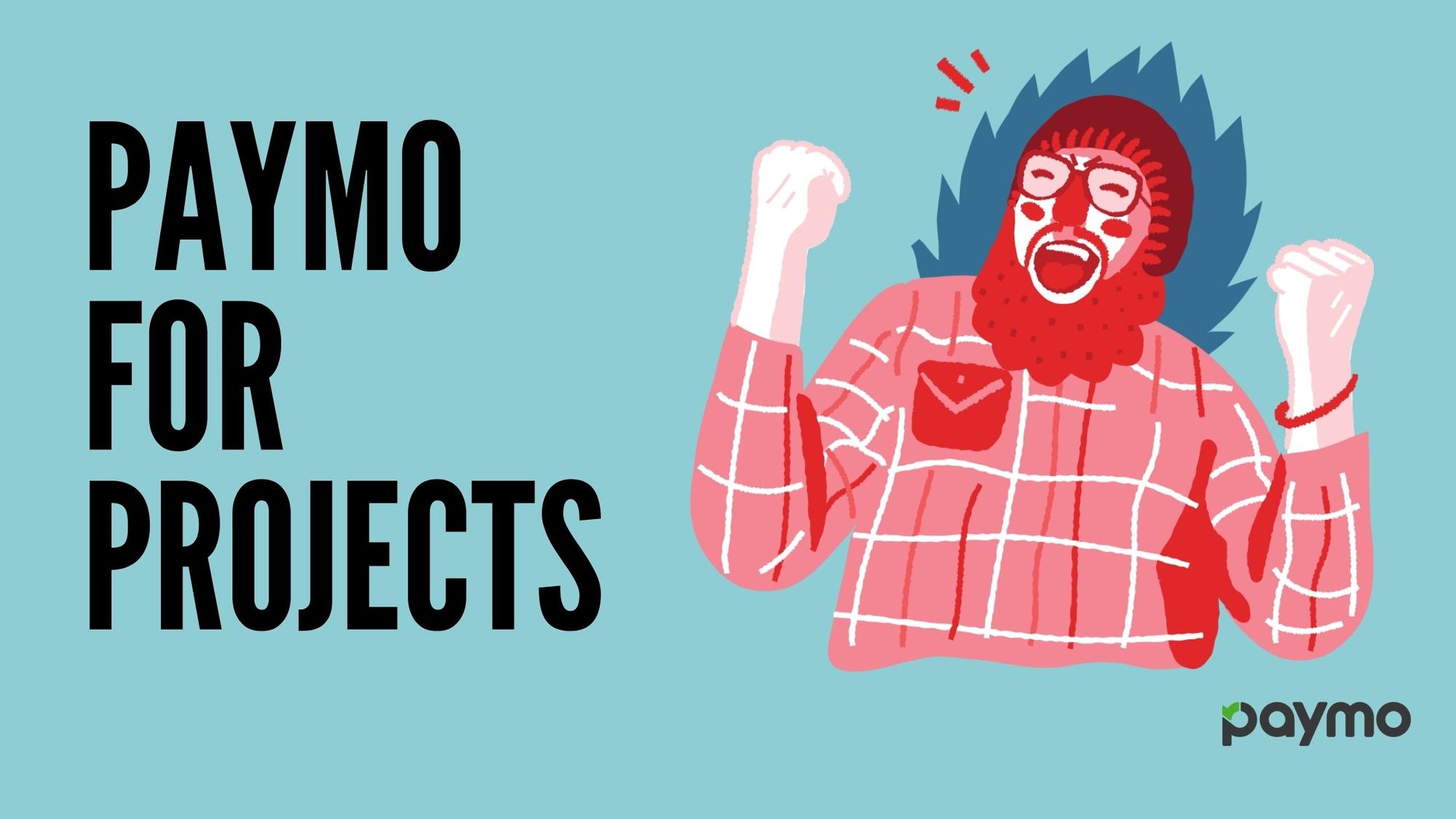Illustration by Murat Kalkavan from Ouch!
Picking the right project management tool can be a tough task, considering the sheer number of options you have within a wide price range. But affordable doesn’t necessarily mean better, as they often lack core features and scalability. In this case, Paymo stands out by offering you a project management tool that hits the right balance between price and functionality.
PRO TIP: Paymo is a killer app for project management, but it's missing one essential feature. Click here to scroll to that part of the article right now.
Paymo offers a collection of brilliant project management features that help you plan, schedule, and manage your projects efficiently. Some of its unique features include time tracking, billing, invoicing, and more.
Whether or not Paymo is the right tool for you depends on your specific needs. If you are getting started with project management and looking for an affordable solution, you might want to check out tools like Zoho, Teamwork, and GanttPro. But if you’re a project management veteran managing large teams and looking to explore new options, you can check out LiquidPlanner and Mavenlink. Note that tools with enterprise-grade features will definitely cost more.
Paymo stands out from its competitors by offering a mid-range solution rich in features and flexible enough to scale according to your needs.
Getting Started With Paymo
You can sign up using your email to get started with Paymo. You also have the option to sign in using your Google or Apple account. You will be redirected to your home page.
If you want to invite your team members to your account, click the plus sign on the left of your screen and select User. A dialog box will appear where you have to fill in the required information about your team member, including their name, email, role, workdays, hourly rate, and leave entitlement.
You will also find a list of checkboxes under the title “Privileges,” where you can specify how much control the user will get in the application.
Once you add your team members, you can easily get started using the templates offered by Paymo or start your projects from scratch.
Plan Your Projects
Project Templates
Paymo offers a range of templates categorized by industries and task purposes. You can use these templates or create your templates to use in the app.
Gantt Charts
You can choose the Gantt Chart view to display the start and finish dates of your projects. Choosing Portfolio Gantt Chart displays all the project timelines on a single screen, helping you understand your workload and overall progress.
Task Lists & Milestones
You have the option to view all your tasks at any given moment based on their priority and deadlines or group them by projects. You can also use milestones to set specific goals for each project to make it easier for your team to complete them.
Critical Path
Paymo can help you highlight the critical path or the longest sequence of tasks to complete the project on time, making sure you don’t face any unexpected delays.
Manage Your Tasks
Task Alerts
Paymo allows you to set an alert to notify your members about the deadline beforehand. You can also set a time budget alert to notify them about the percentage of time tracked from the task budget. This helps your team to always stay on top of the project progress and finish it on time.
The Missing Feature - Image and File Annotation Directly within Paymo
So you're digging Paymo just like us. You're managing projects like a champ, creating tickets, responding to colleagues. Now, you want to annotate an image someone attached to a kanban card. This is pretty much a daily need for most project managers.
So you download the image, open it in another tool, add some annotations, download the image, re-upload it. But what if you could just click to annotate and send the image directly in Paymo – that would be slick. That's what's missing from Paymo. Image annotation directly from cards and tickets, without leaving the tool. And that's what Markup Hero's image annotation API does. They just need to integrate it and it's super easy.
Here's a video showing how it would work inside a typical project management platform like Paymo.
Or better yet, just try it for yourself. Here's a quick demo showing the annotation library in action. Just click the annotate button, add whatever annotations you want, click done and watch the magic.
Dependencies
If your tasks are interlinked, you can set dependencies on Paymo to make sure the tasks are performed in proper order. You can also create recurring tasks at daily, weekly, or monthly intervals and set task priorities.
Kanban Boards
You can use the Kanban view of Paymo to visualize and manage your workflow throughout different stages of your tasks. You move the cards to certain columns based on the stage of the task. For example, you can move finished tasks from “in progress” to “completed.”
Project Estimates
Paymo allows you to convert all your project information into an estimate based on rules you’ve set beforehand. You can then send that estimate to clients to get the final approval before starting the actual work.
Track Project Finances
Budgeting
With Paymo, you can set your project budget and check if your project is financially feasible by comparing it to the estimates. You can also set fixed or hourly price rates on resources and task items.

Expense Tracking
Along with efficient budgeting, you can track project expenses and add tags to them to make it easier to sort during billing. You can then filter your expenses by name, project, creator, amount, date, status, tags, or notes.
Collaborate With Your Team
Real-time Discussions
Paymo includes a dedicated discussion area for teams to collaborate in real-time. You also have the option to comment on individual tasks and keep your discussions in context.
Activity Feed
Paymo records recent user activities where you can see the latest activities performed by individual users. These include new tasks, new clients, new comments, new invoices, project changes, and more.
How Much Does Paymo Cost?
Paymo offers one free and two paid tiers of service, for which you can pay monthly and annually. You can start with a 14-day free trial for its paid plans, which doesn’t require a credit card. You can also cancel your subscription any time you want.
Free
Price: $0, but limited to 10 users.
What You Get: The free plan comes with unlimited projects and clients but with tasks limited to 100. You can access the List, Table, Board, and Calendar view, as well as the native time tracking feature.
Time entries are limited to 250, while Time reports, Invoices, Estimates, Expenses are limited to 3.
Who it's For: The free plan offers pretty basic tools suitable for small teams with fewer projects and clients to manage.
Small Office
Price: $11.95 /month for each user. You get a discounted price of $9.95/month per user for annual payment.
What You Get: Along with all the free plan features, the Small Office plan adds unlimited tasks, time entries, project templates, time reports, invoices, estimates, and expenses. You also get new features, including Meta Task Board, Recurring Tasks, Active Timers, and 50GB Storage.
Who it's For: The Small Office plan is ideal for teams and departments who need to work with multiple clients and projects simultaneously and track their projects more efficiently.
Business
Price: $18.95 /month for each user, with a discounted price of $15.79 per user for annual payment.
What You Get: The Business plan offers everything included in the Small Office plan, with additional features including Gantt Charts and Portfolio Gantt Chart. You also get HR features such as free onboarding and training, employee scheduling, workload, and leave management. You also get 100GB of storage, as well as priority support.
Who it's For: The Business plan offers features that are most useful for large teams, where efficient personnel management is crucial.
Why Should You Choose Paymo?
Despite a large number of competitors in its price range, Paymo stands out as a project management solution. It offers a set of comprehensive project management tools that helps your team become more efficient by streamlining their workflows.
Paymo’s time tracking tools help you schedule your tasks, keep tabs on project durations, and manage the workload for your team members. Since it comes with mobile apps for both Android and iOS, team members can log the time they work and the leaves they take from anywhere.
You can also generate actionable insight and reports, record how long each of your team members worked, and create invoices, estimates, and expenses.
Final Thoughts
Although it offers some of the most common project management tools you can find in a lot of other alternatives, Paymo’s real value lies in its time tracking, invoicing, and billing features.
As we mentioned earlier, its utility completely depends on the needs of your team. If your team can work effectively with a generic set of project management tools, it is wise to look for cheaper options like Zoho, Teamwork, and Ganttpro. But if time tracking and billing features are important for you, Paymo would be your ideal choice.


